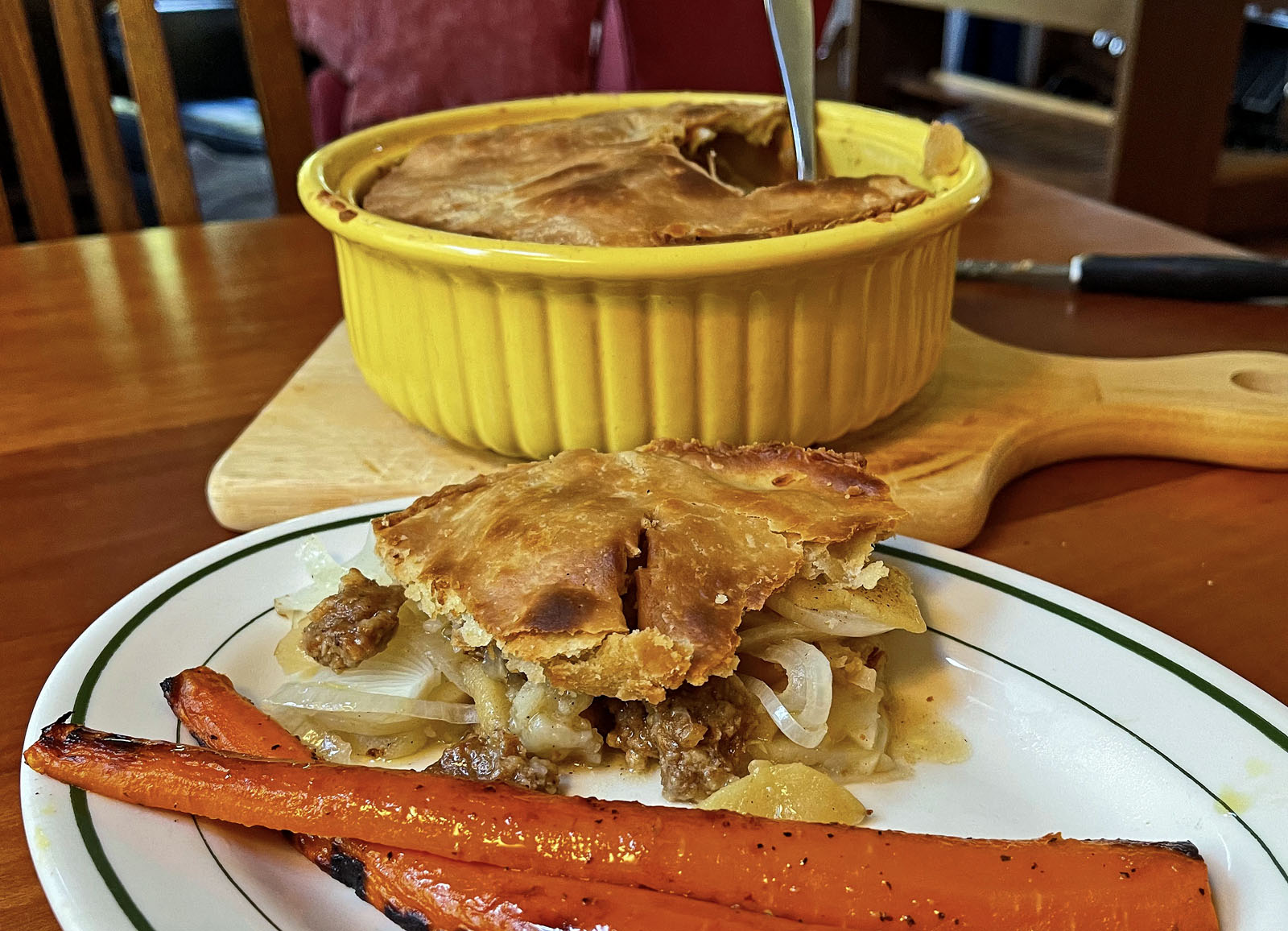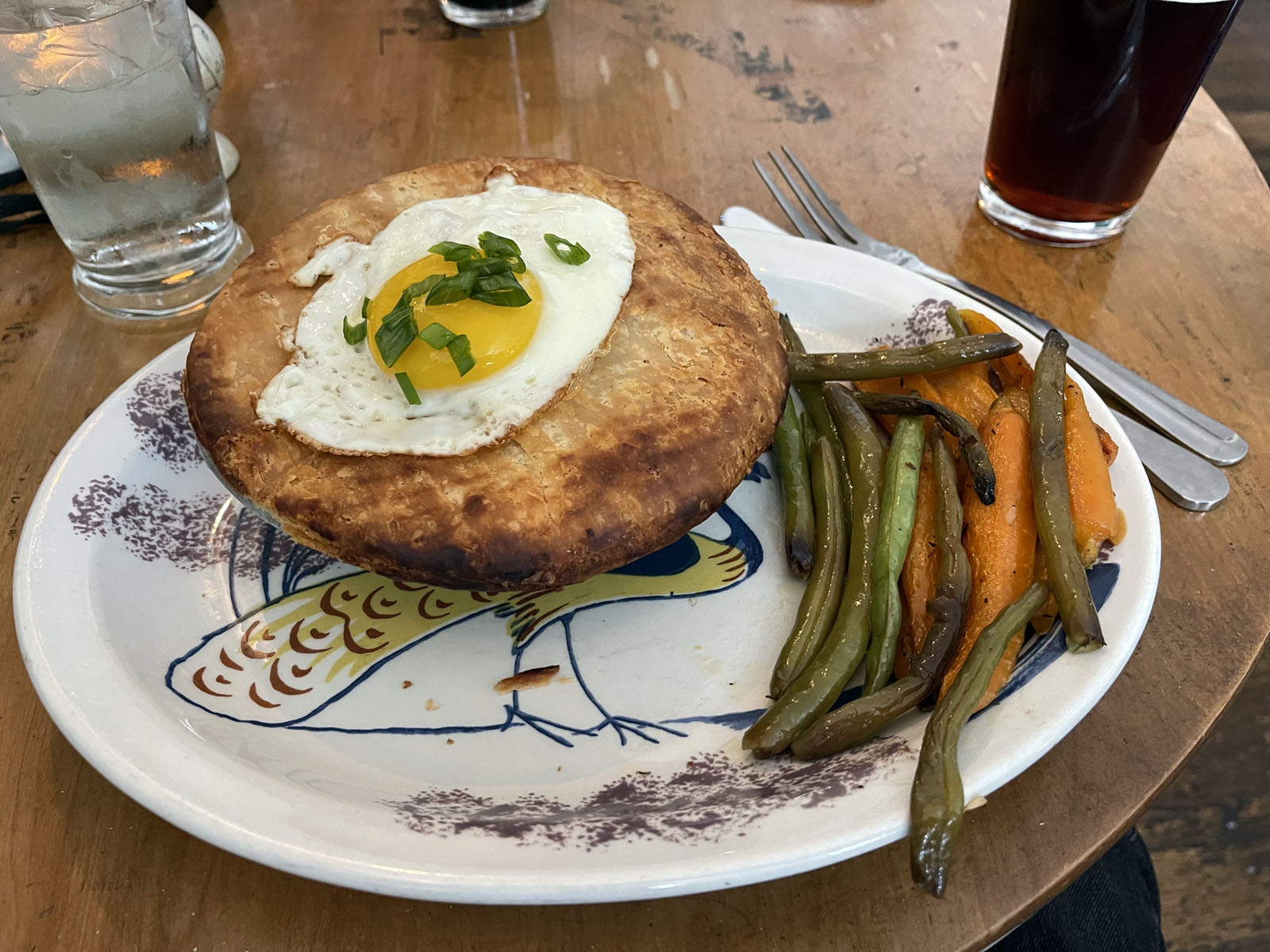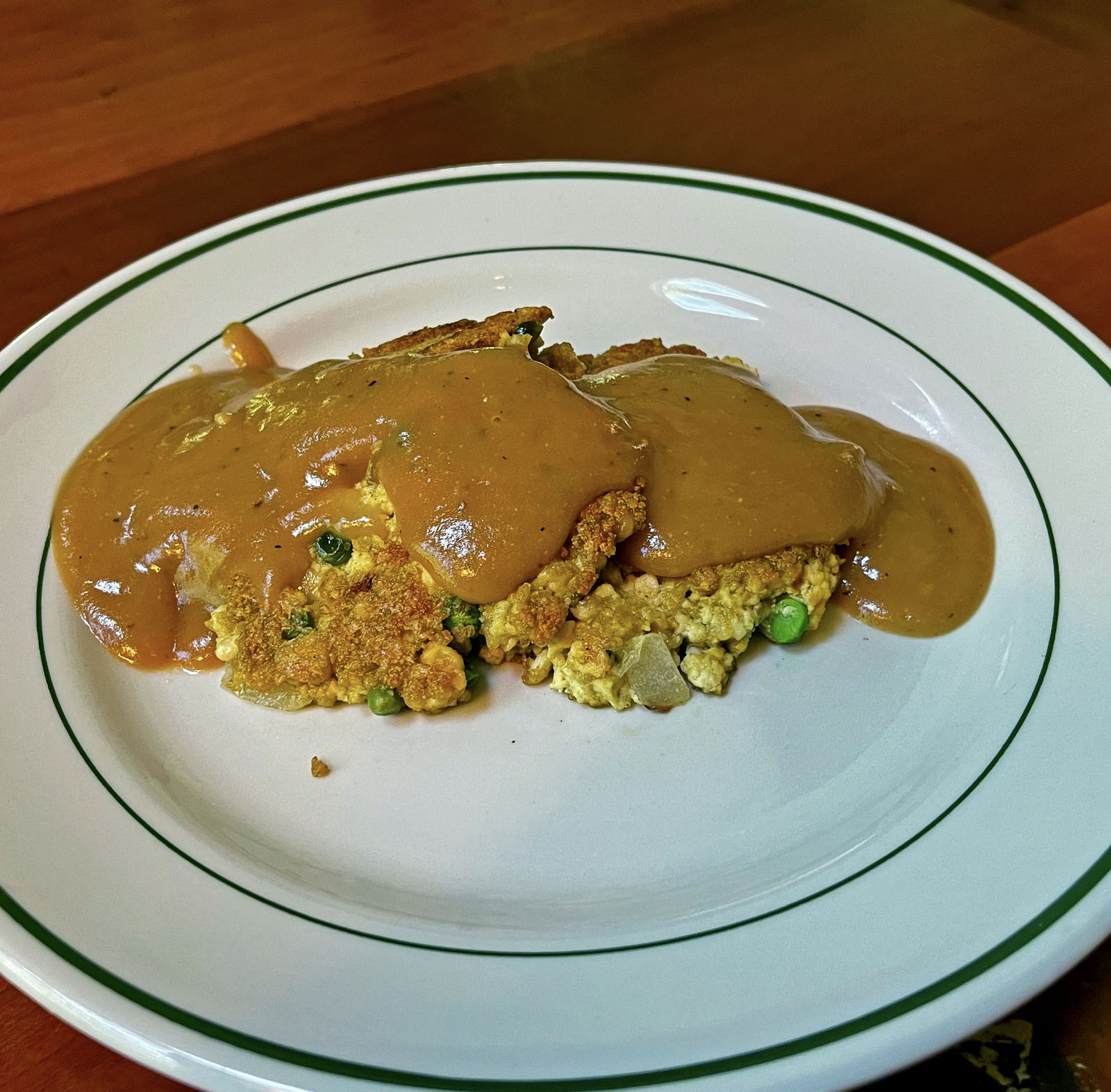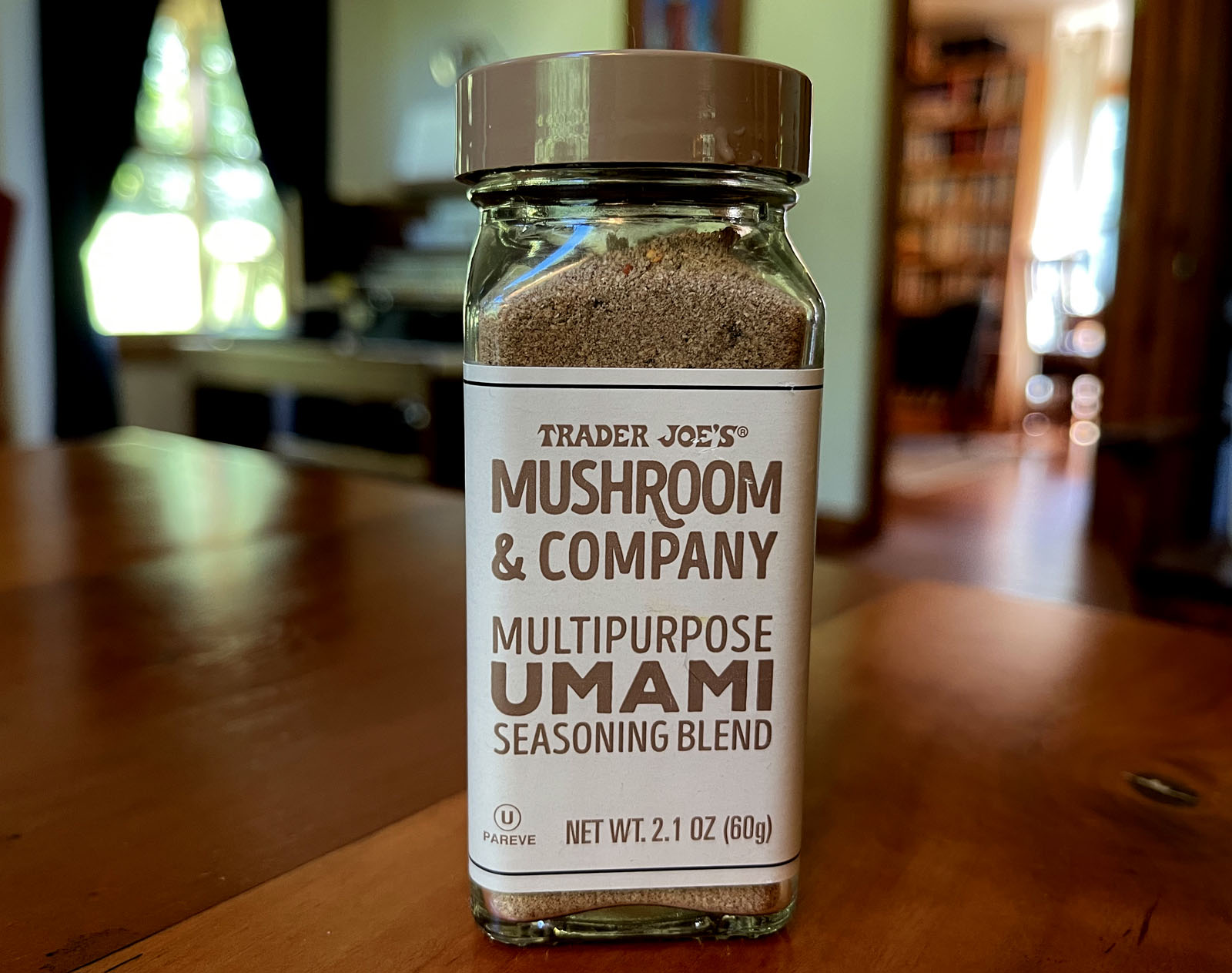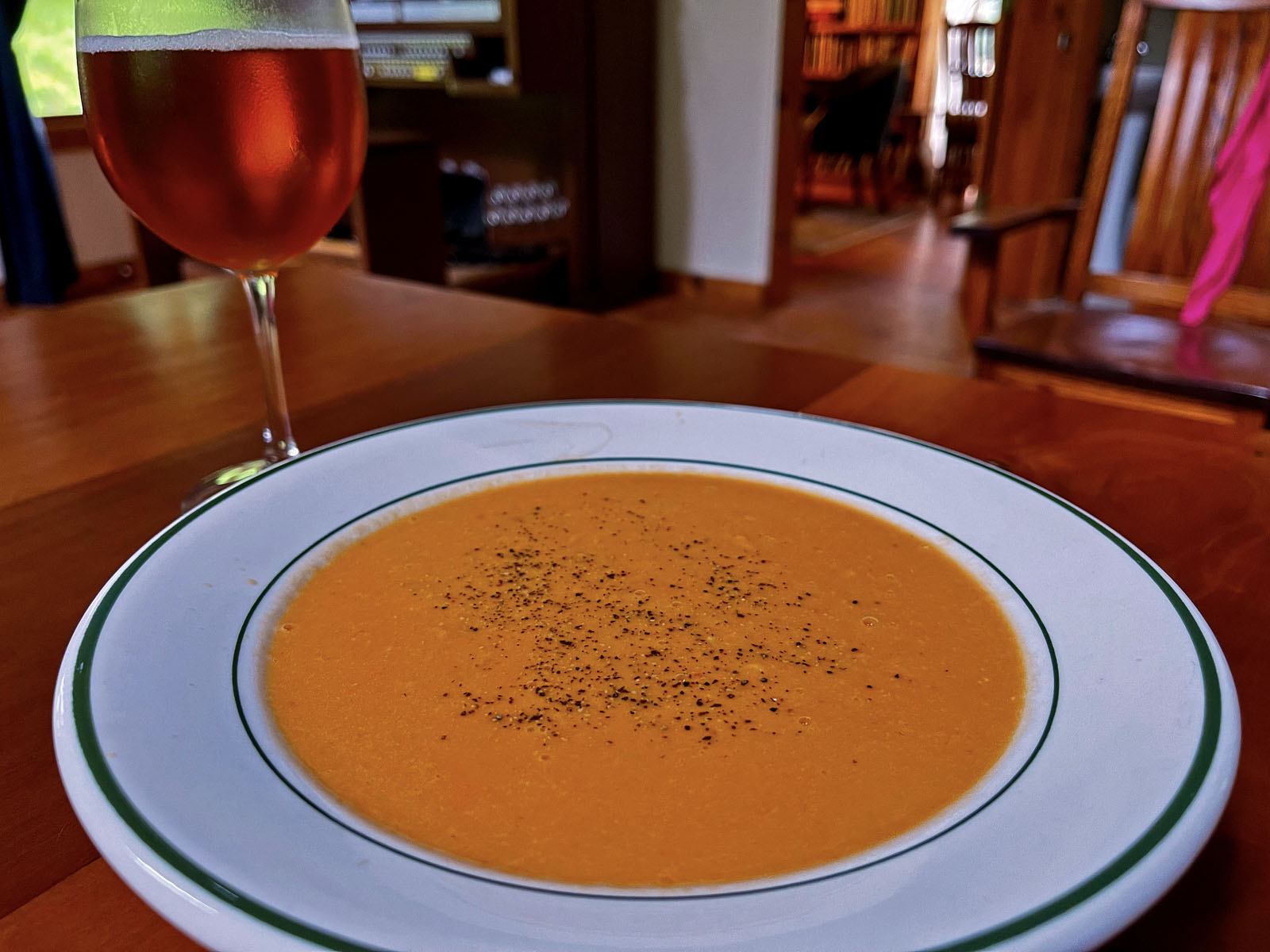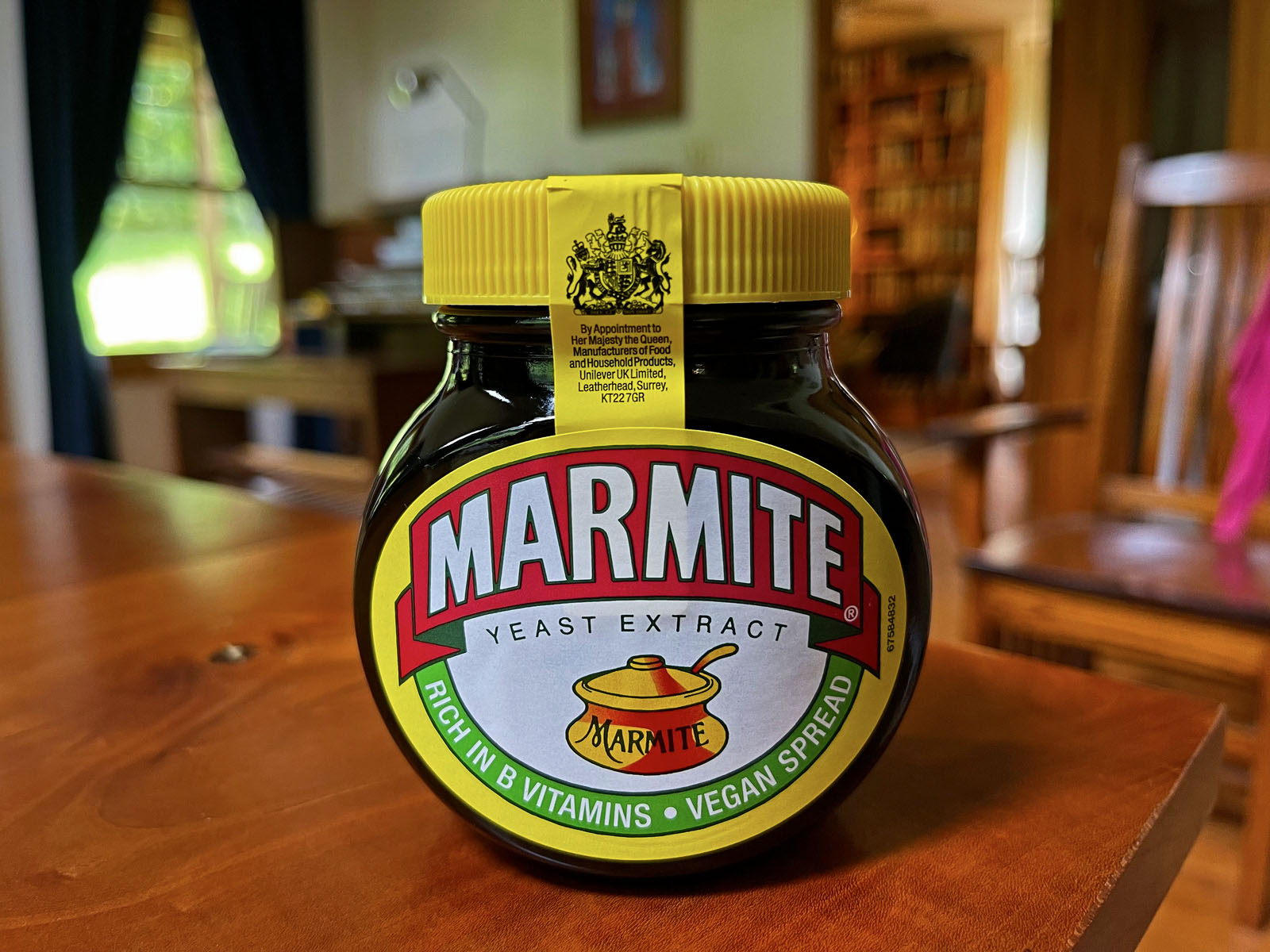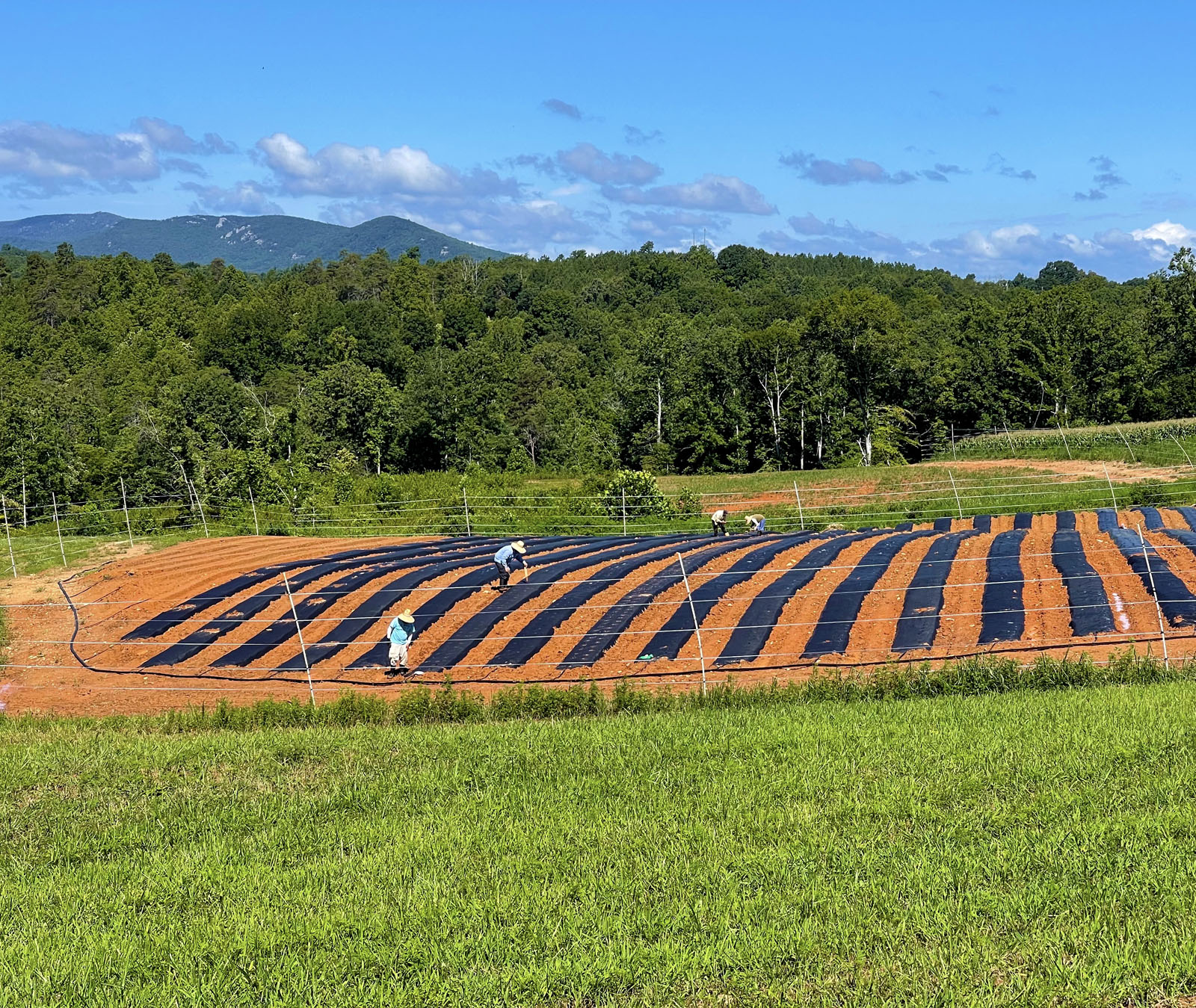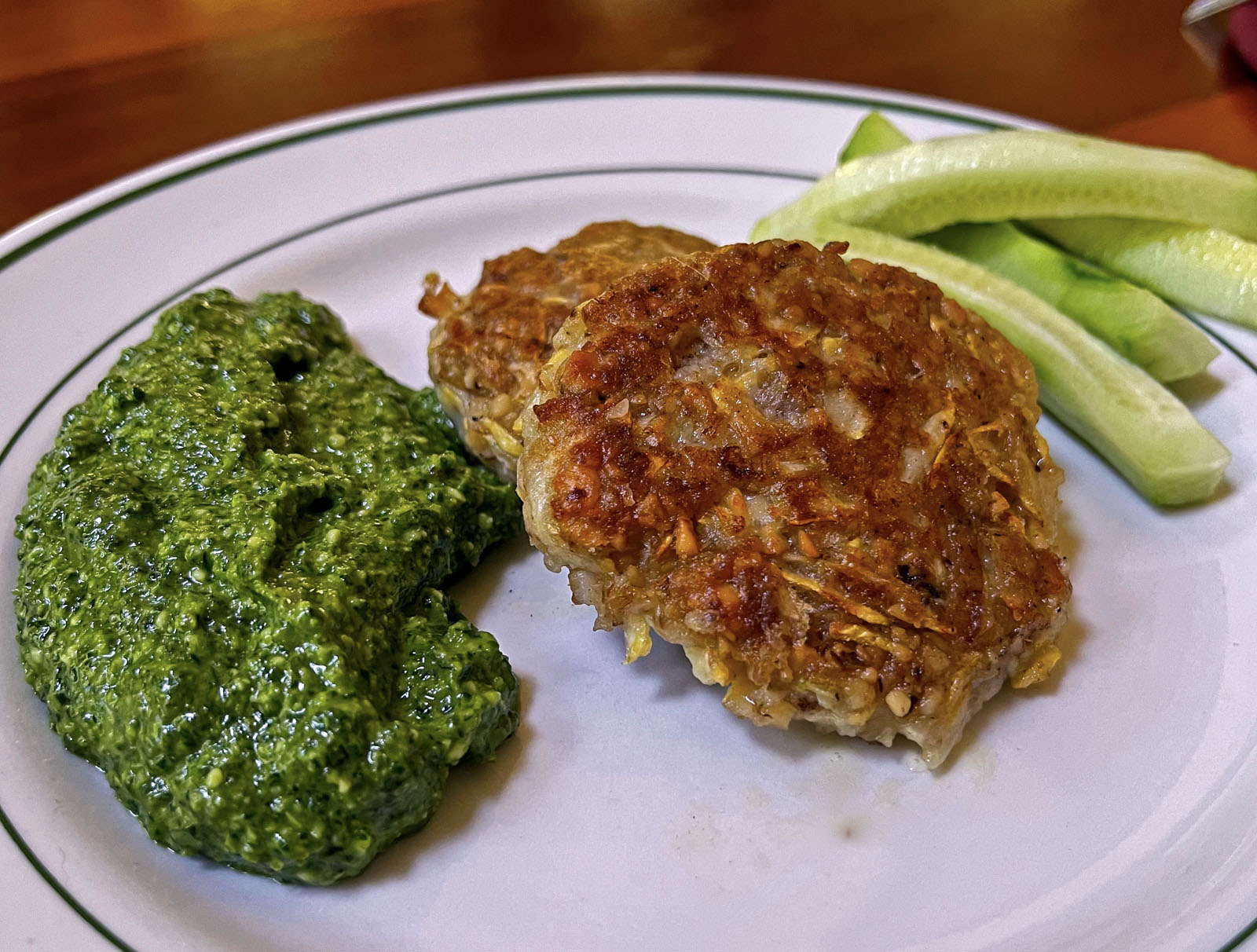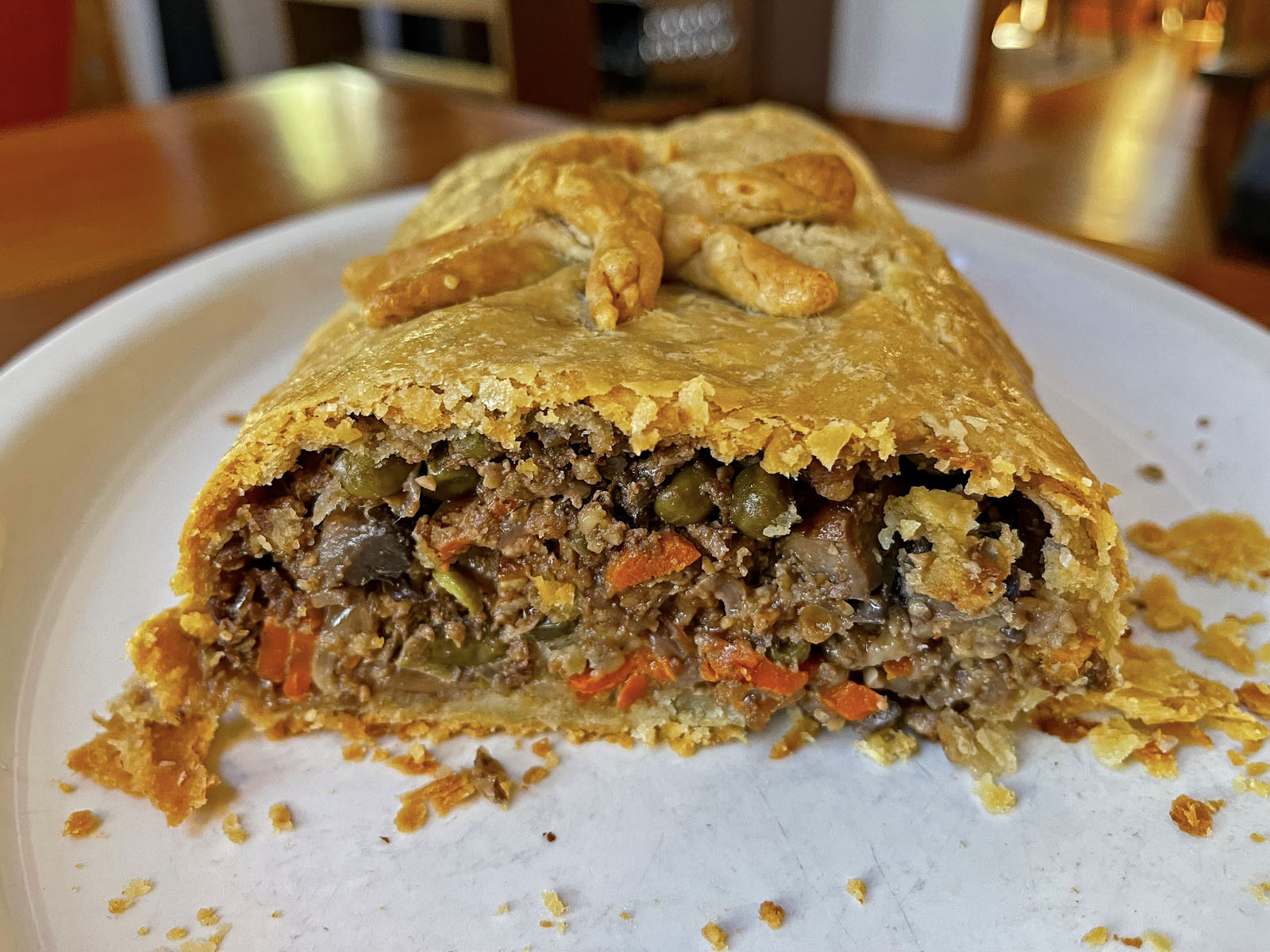
Last week, the Washington Post’s food section had a recipe for vegetarian mushroom Wellington. I couldn’t stop thinking about it. Today was a cold day, a good day for making puff pastry and for using the oven. So I did it.
As always with recipes, I borrowed the concept and modified it to suit my own taste. Chestnuts didn’t sound nearly as good to me as walnuts. The Post’s recipe calls for bread crumbs in the filling, which I thought was a poor idea because there already are enough carbs in the crust. I made up the difference with peas and carrots. And I seasoned it with a touch of sage and mace rather than the herbs that the Post’s recipe calls for. The Post’s recipe uses large slices of portobello mushrooms, I assume to resemble slices of beef. Instead, I chopped the roasted mushrooms coarsely and mixed them in with the rest of the filling.
The Post’s recipe also calls for store-bought puff pastry. What would be the fun in that, even if I could find it? Adventure in the kitchen means making puff pastry every now and then. I used half butter and half olive oil, which works great. As long as you keep the dough cold and there are some butter bits in it, the pastry will turn out fine.
I’ve written here before about how all forms of pie are magical. I thought a lot about that while I was making mushroom Wellington. Partly, pies are comfort food. Pies are ancient, going back to the Middle Ages and no doubt beyond. And covered pies, or pies enclosed in a crust, have the same kind of appeal as a nicely wrapped present. You get to open it to see what’s inside.
You’ll probably need to make some thin brown gravy to moisten this dish. And you’ll need some ale.

